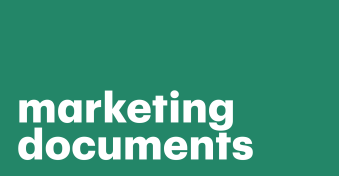On Episode 3 of the Customer engagement lab podcast, hosts Patrick and Travis spoke with Will Allred, the co-founder of Lavender, to discuss email outreach tools and how to improve your overall outreach game.
Today, we’ll take a deep dive into some of the outreach strategies enumerated in that podcast so you can implement Allred’s advice ASAP.
Trick 1. Nurture, don’t badger
We’ve all seen B2B sales emails — those emails that you get from companies after looking at or buying their products — that are supposed to encourage you to shop with them more often.
But how many of those emails do you actually open?
If there are any brands whose emails you delete before even clicking on them, then you know what it’s like to feel badgered by poorly crafted outreach emails that don’t provide value to customers.
You don’t want to be that brand.
To nurture relationships with your customers rather than badgering them, your emails have to stand out.
In this case, email quality is much more important than email quantity.
Blasting your customers with emails to see what sticks will likely result in your customers learning to disregard everything you send them. Instead, craft emails carefully by paying attention to the following values your customers care about:
- Sound educated: Prove that you know what you’re talking about with an interesting statistic or fact your customers might not know. For example, Patrick and Travis talk about following ZubTitles, whose nurture emails were often titled “How To X” and educated the readers on creating quality videos. Because they felt informed by the emails, Patrick and Travis continued to open them and even looked forward to receiving them.
- Be entertaining: If your customers know they’ll enjoy a laugh, they’re much more likely to open your emails. For example, Patrick and Travis talk about how their CEO received a recorded video one day of someone puppeteering a panda. Because the email got a laugh out of him, he gave the sender a chance.
- Discuss your area of expertise: Customers don’t care about you shouting “Buy my product!” day after day. Instead, discuss the category your product is in and the types of problems your product solves. The more you discuss the space around your product, the more the product will be able to sell itself.
- Showcase your company: More and more, customers are showing a preference for working with brands they care about. Showcase the reasons people should want to work with you, whether that’s your commitment to environmentalism or your ethical employment practices.
Trick 2. Know your customers
One-size-fits-all emails don’t work.
Learning more about your customers allows you to create segmented email lists and only send email newsletters to customers they’ll matter to.
For example, a company that sells bath lifts may market toward elderly customers and to customers with disabilities.
A newsletter about the best home modifications for people with ALS doesn’t need to be sent out to those elderly customers, however, and should be reserved for customers who have identified as having disabilities.
The more you get to know your customers, the more you can target your emails accordingly.
Trick 3. Provide value from the beginning to end
Let’s be real: people are busy.
So they’re not going to open your email if they think it’s just another sales pitch.
Instead, let your number one priority be providing value to your customers. This is easier, of course, when you know who your customers are.
Things like “How To” emails can be really good at providing value, especially if you link to full-text blogs on your website or other data-driven sources.
By providing value to your customers, you show — rather than tell — that you’re a brand that understands them and their needs. At that point, getting them to buy your product becomes much easier.
Trick 4. Try something different
According to host Patrick Downs,
“If you’re not making anyone mad, you’re probably playing it too safe.”
– Patrick Downs
The truth is, people get tired of seeing the same marketing strategies being used by every brand. Instead of copying sales strategies, modify them and make them unique to your brand.
Don’t be afraid to reach out more often than the experts advise, or at different intervals. If regular emails aren’t working, try multimedia emails with personalized videos or podcasts.
The more you can set yourself apart from your competitors, the more likely you are to receive some sort of response from your customers — whether that’s a yes or a no.
This, in turn, can help drive more data about what works (and doesn’t work) for your customers.
Trick 5. Cut down on complexity
According to Will Allred, 70% of the emails Lavender looks at start out at a 10th-grade reading level. But to get a reply, Allred says you want the content to be about a 5th-grade reading level.
Why?
The easy answer is that no one wants to take the time to read your email if it seems like work. People are trying to get through emails as quickly as possible, and are often reading them on their phones.
To cut down on complexity, shorten your sentences and replace difficult words like “utilize” with their easier counterparts like “use.”
You also want to format your emails differently, using shorter paragraphs, more bullet points, and more white space than you may be used to.
Trick 6. Check emails on phones
You’re three times more likely to craft emails on your computer than on a mobile device, but the person who receives your email is more likely to be on their mobile device than on their computer.
This is a major gap.
Emails look different on phones than on computers. So emails that look nice on your desktop may not present as well to the people opening your email.
Using a tool like Lavender, you can preview emails on mobile before you send them to ensure they don’t look overly complex to your customers.
Trick 7. Don’t make assumptions
Although you want to do your research on your customers and target your emails, you don’t want to fall into the trap of assuming you know what part of your product they’ll use or whether it will save them time.
Instead, you might start by asking a question about their business or their pain points.
Questions demand answers, which can improve the responses you get when you reach out with a question rather than reaching out with a sales pitch.
Once you fully understand their personal pain points, you’re in a much better position to respond and use a tool like PandaDoc to craft a proposal tailored toward their needs that they might actually pay attention to.
Improving outreach requires knowing your customers
The more you know about your customers, the more you can tailor your emails to meet their needs.
Whether that means understanding their browsing history and sending nurture emails accordingly or optimizing your emails for mobile users, considering the needs of your customers can help your emails stand out.


